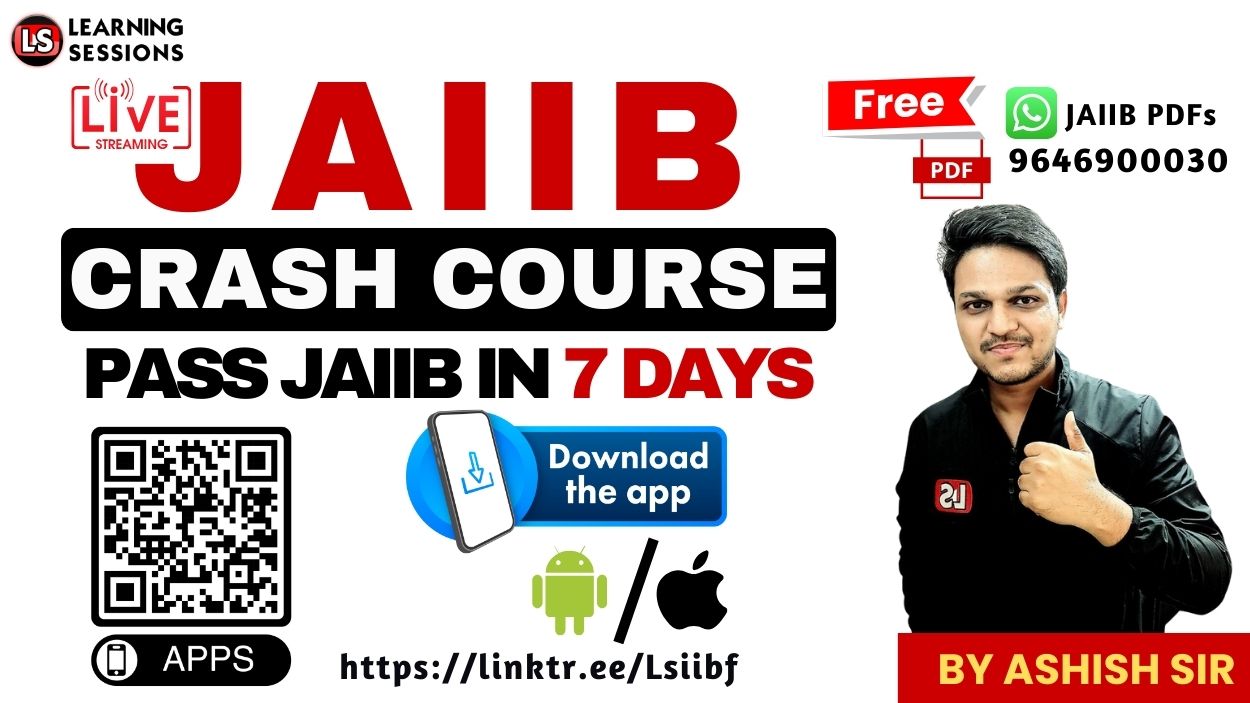Are you preparing for the JAIIB exam and finding Module B of RBWM (Retail Banking and Wealth Management) a bit tricky? You’re not alone! Many banking professionals feel overwhelmed by the wide range of concepts, from account types to MIS systems and regulatory frameworks. But don’t worry — we’ve got you covered!
In this power-packed session, we’ll dive deep into some of the most important MCQs from Module B. Each question is not just answered but thoroughly explained with real-life banking examples. Topics like Current Account Guidelines, ECS, NEFT vs RTGS, Minor Accounts, Bad Banks, MIS, and Securitisation and more are discussed in a friendly Hindi-English mix to ensure clarity.
📚 JAIIB Study Resources 📚
👉 Check Here
👉 Check Here
👉 Check Here
👉 Get Tests Here
👉 Check Here
We also explain how each concept is applied in day-to-day banking operations and what kind of questions can appear in the exam based on them. This makes the content not only educational but also highly practical.
Whether you’re a first-time candidate or revising for better scores, this content is designed to boost your confidence and conceptual clarity. Plus, all tricky areas have been simplified through examples, analogies, and case-based explanations.
🎥 Watch the full session to solidify your understanding and don’t forget to drop your answers in the comments!
👉 “Before we dive in, watch this video for a complete breakdown:”
🧠 Module B Questions & Concepts – Detailed Breakdown
✅ RBI Guidelines on Current Accounts & CC/OD Facilities
- Credit Exposure < ₹5 Crore: Free to open current accounts & avail CC/OD from any bank.
- Credit Exposure ≥ ₹5 Crore: Account to be opened only with banks having ≥10% exposure.
- Other Banks: Only collection accounts allowed; funds to be remitted within 2 working days.
💡 Example: If a firm has exposure of ₹6 crore with Bank A and wants to open a current account with Bank B, it can only do so if Bank B has ≥10% exposure i.e., ₹60 lakh minimum.
✅ Monitoring Requirements for New Current Accounts
- KYC Compliance: Mandatory before account activation.
- Third-Party Credits: Must be verified for genuineness.
- Statement Charges: Monthly statements must be free of cost.
🏦 These steps help in monitoring money laundering risks and complying with RBI’s risk management guidelines.
✅ Account Number Portability (Damodaran Committee)
This allows the same account number to be retained even when transferring to another branch/city. It’s similar to mobile number portability and helps avoid re-documentation and cheque book changes.
✅ ECS vs NEFT vs RTGS
- ECS: Best for bulk repetitive transactions like salary, dividend, utility bills.
- NEFT: Timely fund transfers in batches; now available 24×7.
- RTGS: Real-Time Gross Settlement for transactions ₹2 lakh and above.
🤔 Which to use? Depends on amount, urgency, and frequency.
✅ Minor Accounts – Guidelines & Guardian Role
- Minors aged 10+ can independently operate SB accounts in some banks.
- Guardian (natural/legal): Required for opening and monitoring account.
- Cheque book issuance is generally restricted unless conditions met.
👪 Promotes financial literacy among young customers.
✅ MIS (Management Information Systems) in Retail Banking
- Helps in performance tracking, customer insights, and risk management.
- Supports cross-selling and customer segmentation strategies.
- Backbone for decision-making in digital banking systems.
📊 Data-driven banking leads to better profitability and targeted product offerings.
✅ Securitisation of Retail Assets
- Pools assets (like home loans) and sells them to investors via PTCs.
- Improves liquidity and reduces credit risk for banks.
- Governed under RBI Guidelines and Securitisation Act.
💰 Think of it as converting EMIs into tradeable securities.
✅ Other Key Concepts Covered
- Digital Banking Products: Mobile apps, IMPS, UPI, eKYC, and video KYC processes.
- Bad Banks: Used for transferring NPAs to a separate asset reconstruction company (NARCL model).
- Loan Lifecycle: Sourcing → Appraisal → Documentation → Disbursement → Monitoring → Recovery.
✅ Download PDF Notes
👉 Click the link below to download the full PDF of this session with explanations:
Download PDF Notes – JAIIB RBWM Module B Mega MCQs
📝 Conclusion
So, bankers! You’ve just gone through a comprehensive breakdown of Module B of the RBWM paper. From account operations to ECS, from loan processing models to securitisation — everything has been decoded in a practical, example-based style.
🔥 Whether you’re revising last minute or clearing your concepts, this session is a must-watch and rewatch.
💬 Have questions? Want more explanations? Drop them in the comments and let’s discuss!
Happy Learning! 🚀







